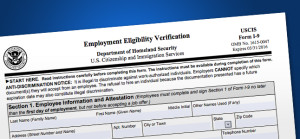Proposed Changes To I-9 Form Important For Greenhouse Growers
 The U.S. Citizenship and Immigration Services (USCIS), part of the Department of Homeland Security, announced in the Federal Register on November 24 proposed changes to the I-9 Form. The proposed changes seek to reduce the number of technical errors on the I-9 Form and increase functionality for customers.
The U.S. Citizenship and Immigration Services (USCIS), part of the Department of Homeland Security, announced in the Federal Register on November 24 proposed changes to the I-9 Form. The proposed changes seek to reduce the number of technical errors on the I-9 Form and increase functionality for customers.
According to Davi Bowen, Government Relations and Grassroots Representative for AmericanHort, most of the changes are targeted at the computer version of the form, so the effect on greenhouse growers would depend largely on how many of them complete the form in that format versus a paper form.
“A number of greenhouse operators have been targeted in recent years by Immigration and Customs Enforcement (ICE) for errors in completing the I-9 form, so having clearer directions would be helpful,” says Bowen. “However, growers need to be aware of changes to the form and be prepared to comment if appropriate, or at the very least, to use the new form when it takes effect later this year.”
If employers are interested in commenting, Bowen says they should compare the proposed new form with the current form and submit comments that: (1) something in the new form is confusing; (2) the new form will take much more time than the old form; or (3) there is some other concern about the new form and specifically how it would have a negative impact on their hiring process or business operations.
A 60-day public comment period will end January 25, 2016. Visit the Regulations.gov website to view the proposed changes or to submit comments.
To see the proposed changes, go to the lower right corner of that page and select the “Table of Changes – Form” or “Table of Changes – Instructions.”
Bowen also mentions a third-party blog post about what the changes will do.
“The idea was to make it easier to complete the form on a computer and to provide a little more information, without changing much on the side of the employer’s obligations,” he says.









